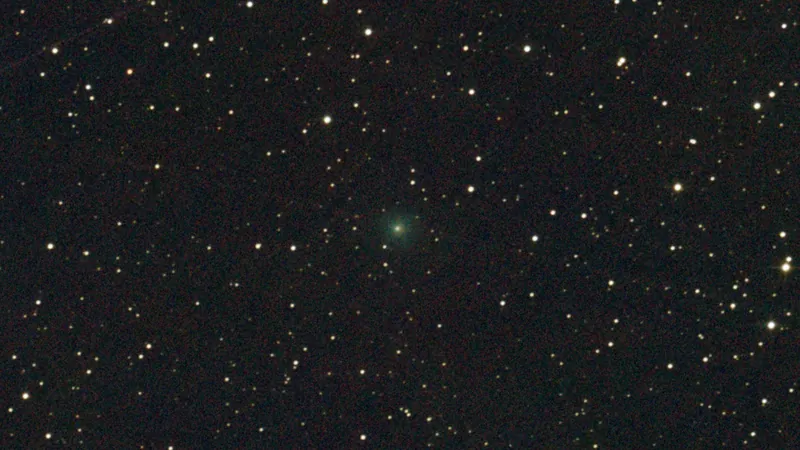
Brace Yourselves: Comet C/2025 A6 (Lemmon) Approaches! Will You See It?
2025-09-08
Author: Rajesh
Get Ready for a Celestial Spectacle!
Heads up, stargazers! A dazzling new comet, C/2025 A6 (Lemmon), is barreling toward Earth and may become visible to the naked eye in the coming weeks. As it makes its way toward the sun, this comet is expected to brighten, potentially becoming an easy target for small telescopes and binoculars.
For those lucky enough to escape light pollution, there's a glimmer of hope for spotting this cosmic traveler without any equipment at all!
The Discovery Behind Comet Lemmon
Discovered by the Mount Lemmon Survey, this celestial body was initially mistaken for an asteroid when it was first imaged by astronomer David Fuls on January 3. At the time, it appeared as a faint speck of light, with a magnitude of +21.5—far too dim for naked-eye visibility.
Further observations revealed its cometary nature. Notably, a pre-discovery image of this intriguing object dates back to November 2024.
Mark Your Calendars: Key Dates Ahead!
Syuichi Nakano of the Central Bureau for Astronomical Telegrams has calculated that Comet Lemmon will reach its closest point to the sun on November 8, approximately 49.25 million miles away. Expect it to come nearest to Earth on October 20, sitting at about 55.41 million miles from our planet.
A 1,350-Year Journey
Comet Lemmon isn’t a stranger to our solar system. Its orbit suggests it takes about 1,350 years to complete a single trip around the sun. Earlier this year, it grazed Jupiter, which slightly altered its trajectory, potentially shortening its cycle by around 200 years.
What to Expect: Brightness Predictions!
Comet Lemmon is likely to spark excitement among amateur astronomers. Predictions for its brightness vary, with some experts projecting it might reach a peak brightness between +4 and +5—just bright enough for the unaided eye!
Others, however, remain cautious, suggesting it could peak as faint as +7.3, which would make viewing with the naked eye impossible, but still accessible through binoculars.
Navigating the Night Sky
Currently, Comet Lemmon is a predawn phenomenon in the faint constellation of Cancer. By October 6, expect a better chance of spotting it as it moves closer to more recognizable constellations.
By October 12, it becomes visible in the evening sky, moving into view low on the northwest horizon, promising further excitement for skywatchers eager to catch a glimpse.
Caution: Your Viewing Conditions Matter!
Be warned: light pollution can hinder your chances of seeing the comet. In areas plagued by artificial lights, it may be quite challenging to spot.
Many will describe it as a faint, circular cloud rather than a sharp point of light—best viewed under pristine, dark skies!
A Celestial Game of Surprise!
Comets are notoriously unpredictable, and while Comet Lemmon could brighten unexpectedly, it might also fizzle out before dazzling audiences.
Keep an eye on updates, as this is one cosmic event you won’t want to miss! Stay tuned for more news on this captivating celestial visitor!




 Brasil (PT)
Brasil (PT)
 Canada (EN)
Canada (EN)
 Chile (ES)
Chile (ES)
 Česko (CS)
Česko (CS)
 대한민국 (KO)
대한민국 (KO)
 España (ES)
España (ES)
 France (FR)
France (FR)
 Hong Kong (EN)
Hong Kong (EN)
 Italia (IT)
Italia (IT)
 日本 (JA)
日本 (JA)
 Magyarország (HU)
Magyarország (HU)
 Norge (NO)
Norge (NO)
 Polska (PL)
Polska (PL)
 Schweiz (DE)
Schweiz (DE)
 Singapore (EN)
Singapore (EN)
 Sverige (SV)
Sverige (SV)
 Suomi (FI)
Suomi (FI)
 Türkiye (TR)
Türkiye (TR)
 الإمارات العربية المتحدة (AR)
الإمارات العربية المتحدة (AR)